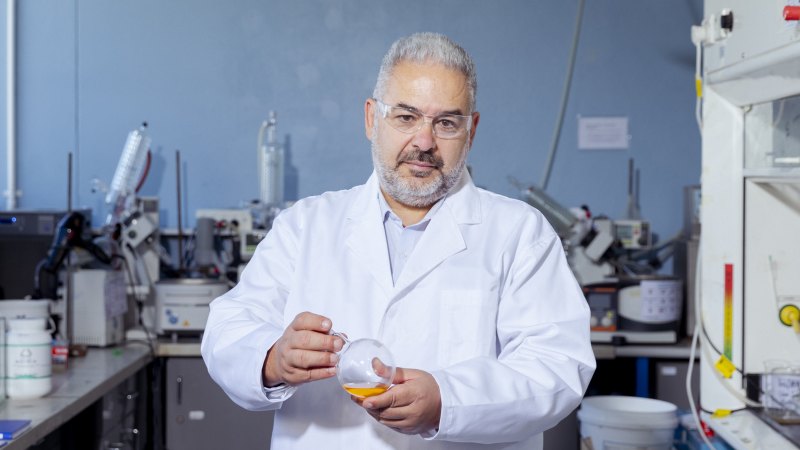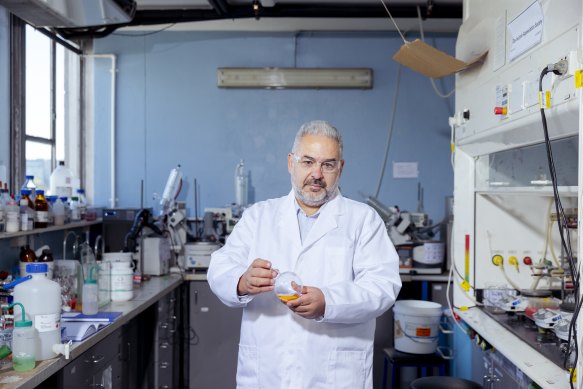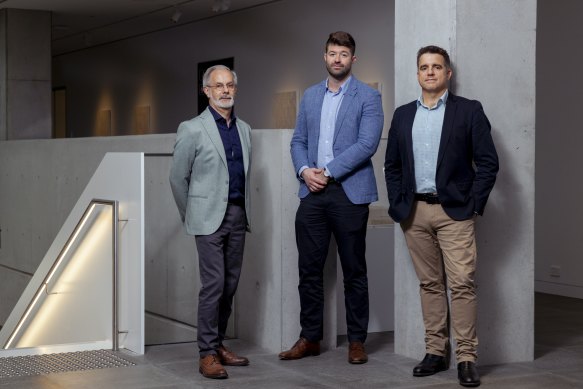‘Think of it like Lego’: The Sydney chemist who found a $273m molecule
Save articles for later
Add articles to your saved list and come back to them any time.
Professor Michael Kassiou spent more than a decade hunting for molecules small enough to enter the brain and activate our oxytocin receptors, which scientists have long suspected could be a potent method for treating dementia, depression and schizophrenia.
After years of that painstaking work, one of the world’s largest pharmaceutical companies has put a price on the molecules he discovered: more than a quarter of a billion dollars.
Professor Michael Kassiou developed molecules that interact with oxytocin receptors, and could be used to treat psychiatric disorders such as schizophrenia. Credit: Dominic Lorrimer
The company Kassiou founded with his University of Sydney colleagues to commercialise the molecules, Kinoxis, has signed a $US181 million partnership ($A273 million) with Boehringer Ingelheim to investigate drugs that treat aggression and social withdrawal in people with a range of psychiatric disorders.
“It’s one of the most exciting drug discovery programs I’ve seen because we’re targeting something that hasn’t been targeted before with small molecules, and in ways not previously possible,” Kassiou, the academic director of the university’s Drug Discovery Initiative, said.
“It opens up enormous possibilities.”
Oxytocin, dubbed the “love drug” or “cuddle chemical”, is the neurotransmitter that lights up the brain during sex and childbirth, and it underpins feelings of trust, recognition and romance.
Associate Professor Michael Bowen, chief scientific officer at Kinoxis, believes stimulating oxytocin receptors can treat dysregulation in the brain that causes social withdrawal and aggression, symptoms he described as “profound and debilitating” that can block people with psychiatric disorders such as schizophrenia from receiving treatment.
“There’s decades of research that shows that the oxytocin receptor and the oxytocin system in the brain is probably the most important system for regulating complex social behaviours,” Bowen, a University of Sydney neuroscientist, said.
But the oxytocin molecule itself is too large to cross the blood-brain barrier and it’s metabolised by the body quickly, so it’s useless in pill form. Some studies investigating how oxytocin nasal sprays could boost sociability in people with autism also found repeat doses quickly lost efficacy.
“So what we had to do is develop something that gives you the beneficial effects of oxytocin, is able to cross the blood-brain barrier, and is able to be used repeatedly without losing potency,” Kassiou said.
Kassiou and his team started with large molecules that were known to activate oxytocin receptors.
Senior vice president and head of global CNS diseases at Boehringer Ingelheim, Dr Hugh Marston, Associate Professor Michael Bowen and Kinoxis chief executive Hugh Alsop.Credit: Dominic Lorrimer
They stripped off parts of these oxytocin substitute molecules one segment at a time to see how small they could get the compound while retaining its functionality.
“Think of it as Lego,” Kassiou said. “You’ve got this big thing, you pull it apart, and then you start putting Lego bricks back together to build molecules you think are going to be useful.”
The process not only identified a molecule that binds to the oxytocin receptor, but also a game-changing compound that binds to a different part of the receptor and boosts the effect of natural oxytocin.
The finding gives researchers options – one molecule can flip the receptor off and on like a light switch, while the other compound acts as a dimmer, tuning the effect of oxytocin up or down.
“That discovery, dare I say, was very serendipitous,” Kassiou said. “We’re in a very unique place where we can activate the receptor directly, or we can enhance the potency of oxytocin and its receptor through this other set of compounds.”
The molecules are yet to be tested on humans. Kassiou acknowledged plenty of promising drugs end up failing in human trials, but said previous studies on the effect of nasal oxytocin gave his team confidence his molecules could work.
As Kinoxis and Boehringer Ingelheim move through the pre-clinical phase, much of the research work remain at the University of Sydney, said Kinoxis chief executive Hugh Alsop.
“[Boehringer Ingelheim] have been looking at this target, the oxytocin receptor, for a number of years and they’ve just never been able to find the chemistry,” Alsop said. “What we had was unique and so they wanted to grab it essentially before someone else did.”
Liam Mannix’s Examine newsletter explains and analyses science with a rigorous focus on the evidence. Sign up to get it each week.
Most Viewed in National
From our partners
Source: Read Full Article



